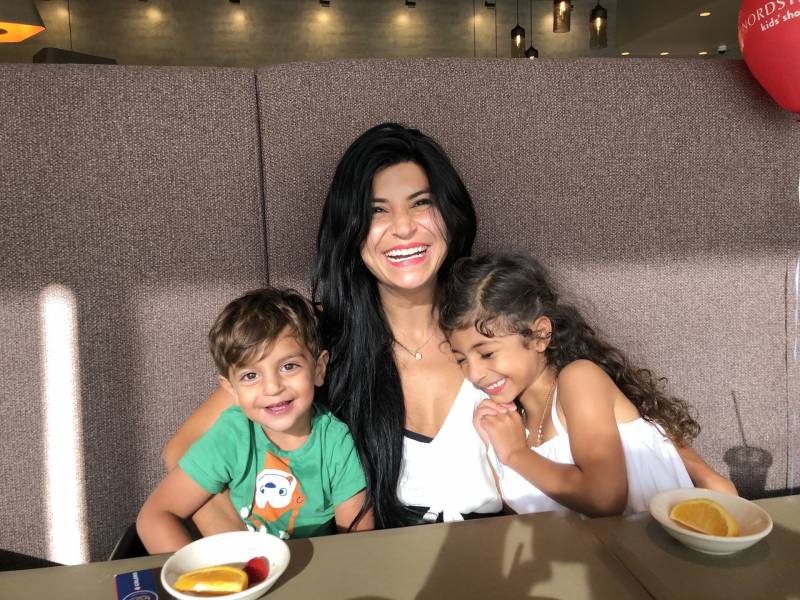“When you’re in a situation where everything is significantly slower for you, you start noticing things in a way that you typically may not, because of the business of day to day,” she said. “I made it a point to pay closer attention to those things.”
Moraveji said we have to get out of our heads if we want to get through challenging situations.
“If there is something that I feel like I can’t do, it’s my mind really telling me that I can’t do it,” she said. “I think we’re adaptable beings.”
Moraveji’s second child was born prematurely at 31 weeks. She said her doctors doubted she would bring a healthy child into the world.
“They told me he wasn’t gonna breathe on his own; they told me that he’s not going to cry when he comes out; he’s not going to do this, he’s not going to do that,” she said, laughing. “But he came out screaming his lungs out.”
Moraveji’s story is part of Inspiration/Isolation, a new interactive audio feature created by reporters and producers at KQED.

To experience Isolation/Inspiration on Alexa, say “Alexa, open Isolation Inspiration.” You can also find it here on Amazon.

To experience Isolation/Inspiration on Google Assistant, say “Hey Google, talk to Isolation Inspiration.” You can also find it here in the Actions Directory.


